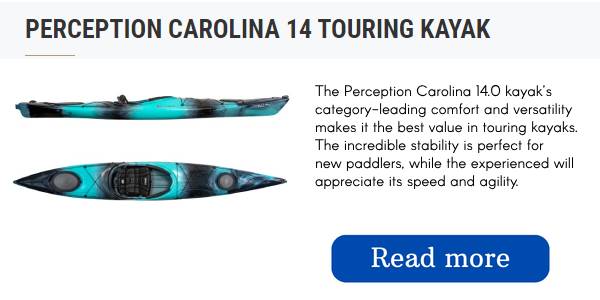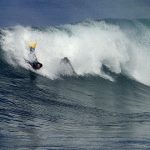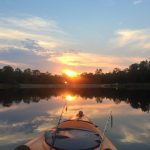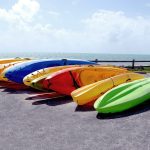Looking to hit the waves and catch some gnarly rides? If so, you’re going to need the right bodyboard.
But with so many different shapes, sizes, and materials to choose from, finding the perfect one can feel overwhelming. That’s why we’ve put together this comprehensive guide to help you make an informed decision.
Whether you’re a beginner just starting out or a seasoned pro looking to upgrade your gear, we’ll walk you through everything you need to know to choose the right bodyboard for your skill level, riding style, and personal preferences.
So grab your wetsuit and let’s dive in!
how to choose the right bodyboard
A bodyboard can be a really treasured object, the perfect companion for any journey and an incredibly thrilling wave riding machine. Be careful not to choose a board that isn’t suitable for you since it will only constrain your efforts and leave you feeling annoyed in the water.
The way a bodyboard performs can be significantly changed by the various designs and brands of manufacturers. We will help you understand the tech and jargon in this industry.
Spend some time researching, become knowledgeable, and don’t spend money until you understand the subject.
Bodyboard size considerations
The most important factor when selecting a bodyboard is its size. The performance you put forth will be impacted by both your height and weight. Even being off by a mere half an inch can cause challenges in catching and maneuvering waves.
When held up, the bodyboard should be long enough to reach from your knees to your chin. Individuals of greater weight should go for a template that has more width in order to gain additional flotation and buoyancy.
Choosing a board for your ability
Generally, the amount you pay for a bodyboard will determine its quality. A high-grade board will not transform you instantly into a competitive champion, so it is important to be realistic about your expectations.
Do not purchase an expensive bodyboard equipped with beneficial characteristics if you are incapable of capitalizing on them.
Picking cores for peak performance
Although the innermost part of a bodyboard is not visible, it is the most crucial factor. This creates a framework that, if employed correctly, will let you make advancement, relish the activity and accomplish the most that you are capable of. If you get the primary type wrong, there is a strong possibility that you will never become close friends. It just won’t feel right.
The kind of foam employed in every core affects how the bodyboard performs in the water. Contemplate the environment in which you will utilize your new ally. Take into account the temperature of the water, the size of the waves, the types of waves, and your own physique.
Alright, now we’re going to survey an extensive collection of labels used by a variety of companies to assert their authority over what is essentially the same material – foam. There are two varieties: polyethylene (also known as PE) and polypropylene (which is referred to as PP). But which is best for you?
PE versus PP
Polyethylene is the most popular core material employed in bodyboards, particularly in chillier seas of Great Britain and Northern Europe. Despite weighing more than PP, this material possesses greater flexibility, resulting in more controllable movements.
PP cores are preferred by warm water riders. The weight and strength of these objects are better than the polyethylene ones, thus providing a faster and more dynamic ride when taking corners. An PP board can maintain its original shape very effectively, lengthening its life span beyond that of a PE board.
It can be very attractive to use a PP board in icy northern European seas, though the extra firmness of the board can make for a bumpy, out-of-control experience particularly during colder months. The absence of flexibility might make even simple maneuvers very difficult.
Generally, PP boards last much longer than PE ones. Although giant and powerful waves, such as those that hit the shore, are favored by some surfers, they prefer the extra elasticity from polyethylene core boards. It possesses the capacity to alter and form itself into the crests of a wave more conveniently. Not sure which one to go for? Don’t worry. Once you have developed a habit of bodyboarding in various locations, you will take a closer look at key characteristics.
Dual cores (3D cores)
Polyethylene (PE) and Polypropylene (PP) can be thought of as two opposing ends of the board core spectrum, from rigid on one end to soft foam on the other. As board technology advances (making things more complex), companies have made boards with characteristics of both board varieties. These are known as 3D cores.
They construct a layered arrangement of both PE and PP foam to create a “sandwich” effect that results in higher toughness and enhanced performance.
Low density PP cores
PP cores beginning to show up with a decreased proportion are also becoming evident, resulting in a decrease in firmness. Brands employ various nomenclatures for low density polypropylene core boards.
NMD and VS refer to the energy centers as NRG cores, while Found refer to them as Paradox cores. Many surfers claim this particular design provides them the top of both worlds.
The board is lightweight but provides great flotation and elasticity in colder conditions and remains rigid and steady in warmer temperatures without becoming too soft.
EPS cores
Entry level or beginner bodyboards often feature an EPS (Expanded Polystyrene) core. This rigid yet lightweight foam gives the perfect base for jumping into crashed waves and riding them to shore. It provides excellent lightness and good elasticity.
Perfect for first-timers tackling their first waves.
Bodyboard Core Glossary
EPS – Expanded Polystyrene (beginner / starter bodyboards)
Bodyboards for cold water (eg. UK & European waters)
PE – Polyethylene
LOADED – Low Density PP
NRG or NRG+ – Low Density PP
PX – Low Density PP
PC – Paradox Core Low Density PP
D12 – Low Density PP
EFC – Low Density PP
FUSION – Low Density PP
3D – Dual Core (sandwich of PE and PP)
Bodyboards for Warm water (eg. Indonesia & South America)
The Parabolic Flex System (PFS) consists of a thicker piece of polypropylene for the central section of the board, with a narrower strip of polypropylene along the rails.
PP – Polypropylene
Freedom 6 PP – Beaded Polypropylene
What Should I Look for When Buying a Bodyboard?
Choosing your first-ever bodyboard can be a bit overwhelming. It may seem daunting to think about all the elements needed to buy a board, but once one is familiar with the criteria, the process becomes quite straightforward.
Here are some guidelines you can use when buying your bodyboard:
Size
The size of the bodyboard is the most essential element to consider when buying one. Get an exact calculation of your weight and height to be able to determine the most suitable size of bodyboard for you. Seek to obtain the ideal board size that will suit your size and capabilities.
Consult bodyboard size guides and the board manual to determine if the board meets your requirements.
Core
The core or foam used is essential to the board’s performance. A P.P. foam is most suitable for warm water and a P.E. board is ideal for cooler waters.
Find out what the temperature of the water is at the beach you intend to bodyboard at. Pay attention to how polyethylene works better than polypropylene when waves become larger in size.
Tails
You have the option of selecting between two different kinds of tails for bodyboarding. Crescent tails are more responsive and have good maneuverability. It is also more pleasant to use as it adjusts to your bodily form.
The other sort is referred to as the bat tail which has the tail resembling the shape of a bat. This particular tail is greatest for performing 360s, backflips, and other bodyboard stunts.
How Heavy Is a Bodyboard?
It is possible for a 40-inch (102 cm) bodyboard to be 1.8 pounds (0.82 kg) in weight, however, it is important to remember that the exact mass of the board can be variable based upon the components used when making the board.
If you’re looking for the weight of your bodyboard, it should be listed in the board’s product information.
The weight of a bodyboard depends on its dimensions, including length and width. In spite of this, a variety of bodyboards exist in varied forms and dimensions, which impacts the board’s heaviness. Bodyboards are usually light, thus there is no need to stress over transporting or hauling them with you.
When purchasing a bodyboard, it is critical to select the correct size as well as one that can handle your weight.
A bodyboard that is of lighter weight can carry people of lower mass, while one of more significant heft can accommodate individuals of heavier weight.
How Wide Is a Bodyboard?
The length of bodyboards may be between 18.8 and 20 inches, but they can come in sizes smaller or larger than this.
The size of bodyboards varies, just like their weight, to suit all people who want to take part in the enjoyable activity of bodyboarding. Though it may not be obvious, the breadth of bodyboards is an essential component that has an essential effect on the maneuverability of your board.
The size of a bodyboard makes a major difference in how you enjoy bodyboarding, so it is essential to learn the best width for maximizing your activity. The more extensive your board is, the greater its buoyancy, which makes turning slightly more difficult.
The latest bodyboards on the market have a slim build that enables riders to execute tighter and faster turns with greater ease.
How Tall Should Your Bodyboard Be?
Generally, your bodyboard should come up to your navel when you place it flat on the surface. Verify the size of your bodyboard is correct by standing with it in front of you and make sure that the board is as long as the distance from your chin to your knees.
These are the two easiest methods to determine the height of your bodyboard.
Take note of how size affects performance: a bodyboard that is either too large or too small will have an effect on how well your board works in the water.
Having a bodyboard that is too long for you can make it hard to handle and make paddling strenuous. Alternatively, if a bodyboard is too short for the individual, it will create more resistance in the water, making it more difficult to maintain stability and ride the wave.
What Size Bodyboard Should I Get?
Two key things to remember when selecting a bodyboard are your height and weight. These two pieces of information will help you to determine what size will be most suitable for you. Having the right size bodyboard is absolutely essential for maximum performance.
This chart below can be of great assistance when you are trying to find the right size bodyboard for you.
Bodyboard Size Chart
| Board Length (inches/cm) | Rider Weight (lbs/kg) | Rider Height (ft.’ & in.”/m) |
| 32” to 34” (82 to 87 cm) | 40 lbs to 64 lbs (18 to 29 kg) | Under 4’ (1.2 m) |
| 36″ to 38” (92 to 97 cm) | 65 lbs to 85 lbs (30 to 38 kg) | 4’ to 5’ (1.2 to 1.5 m) |
| 39” (99 cm) | 86 lbs to 115 lbs (39 to 52 kg) | 4’6” to 5’2” (1.37 to 1.57 m) |
| 40” (101 cm) | 110 lbs to 130 lbs (50 to 59 kg) | 5’3” to 5’6” (1.6 to 1.68 m) |
| 41” to 41.75” (104 to 106 cm) | 125 lbs to 170 lbs (57 to 77 kg) | 5’7” to 5’9” (1.7 to 1.75 m) |
| 42” (107 cm) | 145 lbs to 180 lbs (66 to 82 kg) | 5’9 to 6’0” (1.75 to 1.83 m) |
| 42.5” (108 cm) | 160 lbs to 190 lbs (73 to 86 kg) | 5’10 to 6’2” (1.78 to 1.88 m) |
| 43” (109 cm) | 170 lbs to 210 lbs (77 to 95 kg) | 6’1” to 6’3” (1.85 to 1.91 m) |
| 44” (112 cm) | 180 lbs to 270 lbs (82 to 123 kg) | 6’2” to 6’4” (1.88 to 1.93 m) |
| 45” (114 cm) | 195 lbs to 255 lbs (89 to 116 kg) | 6’3″ to 6’6″ (1.91 to 1.98 m) |
| 46” (117 cm) | 220 lbs+ (100 kg+) | 6’4”+ (1.93 m+) |
This is merely an overall reference that riders use as a basis. Certain riders enjoy testing different bodyboard sizes to help them try out different techniques.
in conclusion
Choosing the right bodyboard is essential to ensure a fun and safe surfing experience. By considering factors such as your skill level, riding style, and personal preferences, you can narrow down your options and find the perfect board for you.
Remember to invest in quality materials and craftsmanship to ensure your board lasts through many seasons of use.
With the right bodyboard, you’ll be ready to take on any wave that comes your way. So what are you waiting for? Get out there and catch some waves!




